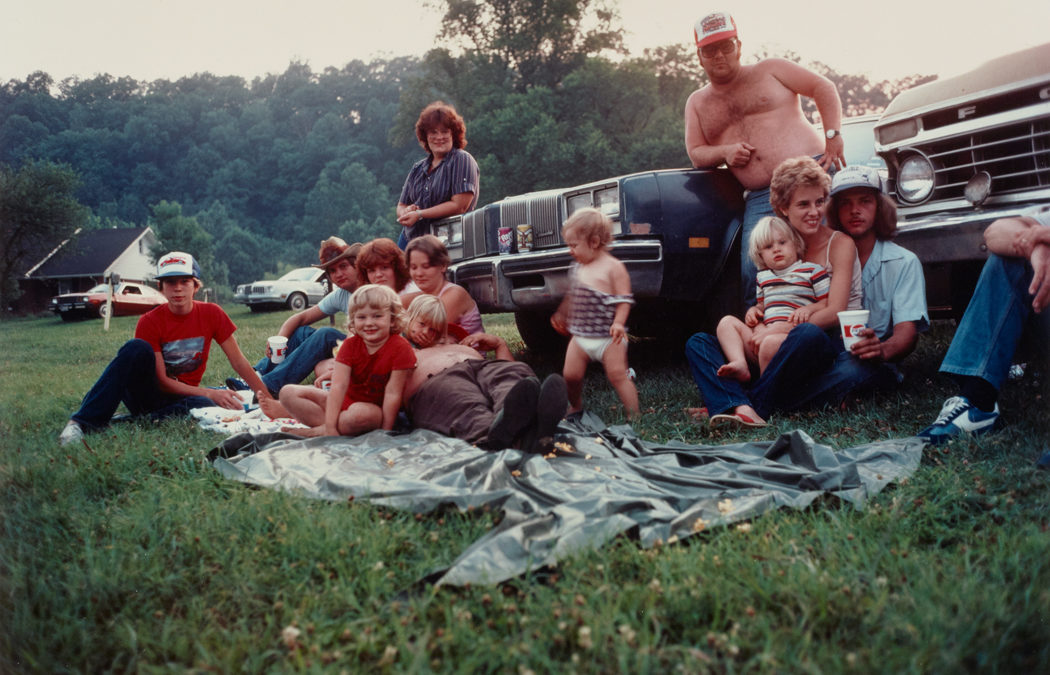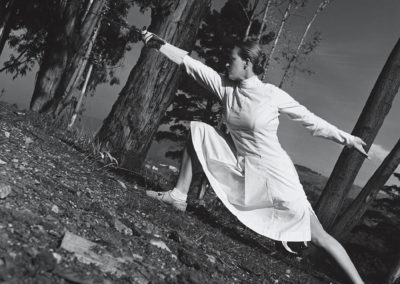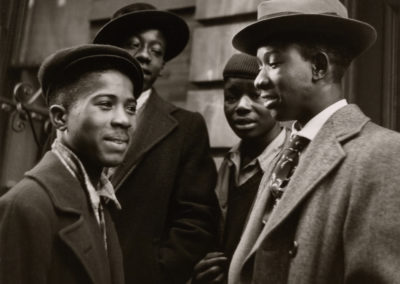Feature Photo: Joan Liftin, American, 70-40, Clairsville, Ohio, 1978. Dye coupler print. Center for Creative Photography, University of Arizona: Gift of artist. © Joan Liftin
Norton Photography Gallery, Phoenix Art Museum
Now through November 5, 2023
The exhibition is organized by Phoenix Art Museum and the Center for Creative Photography (CCP), University of Arizona, Tucson. It was curated by the CCP’s Chief Curator, Rebecca A. Senf.
David Dupree, AZPA board member, will be giving a 30-minute Docent Object of the Month presentation where he’ll be discussing Dennis Feldman’s “White Girl” image featured in the exhibition. You can catch his talks on Thursdays during August:
Norton Gallery – 11:30 to Noon – August 3, 17, 24, and 31, 2023
Special Saturday Presentation – Norton Gallery – 11:30 to Noon – August 5, 2023
Singer Hall – PowerPoint presentation for Senior Coffee at 10:30 a.m.- August 10, 2023
The exhibition opens with a quote from fashion icon and centenarian, Iris Apfel (Vogue Arabia, August 29, 2021).
“Fashion you can buy, but style you possess. The key to style is learning who you are, which takes years. There’s no how-to road to style. It’s about self-expression and, above all, attitude.”
This outstanding show illuminates that and much more. Featuring the work of more than 50 photographers—famous, and not, and spanning more than a century —it encompasses street and documentary photography, portraits and self-portraits, with subjects posed or caught in the moment, while exploring how and where people display/perform their identities.
The exhibition enlightens by asking multiple questions outright (including on individual labels) and by raising more subtle questions about the images themselves. How do clothing, adornments and accoutrements suggest who the subjects are? How do the subjects relate to the photographer and to the viewer, and vice versa? Which subjects were photographed “as they were” and which got to choose their clothing and where they were photographed? What does the environment in which the subjects are seen contribute, or not, to our perception of them?
The photographs are not grouped together in any obvious way to allow comparison and analysis. Rather, each stands on its own. We hope you will spend time with each and, perhaps, find the following intriguing and/or challenging:
Mariana Cook, Portrait of Canadian Mathematician, Cathleen Syrge Morawetz, 2007. Who could guess, without the label, that this smiling lady in winter clothing is not just a sweet old granny?
Dennis Feldman, Man with Reflective Glasses, Hollywood Boulevard, 1969-72. A full-length portrait of a carefully outfitted and coiffed young man that practically screams, “Am I the coolest dude ever?” One can almost hear the sounds of “Staying Alive” (Saturday Night Fever) playing in the background, though the song predates the photograph.

Dennis Feldman, Man with Reflective Glasses 1969-1972. Center for Creative Photography, University of Arizona: Gift of the artist. © Dennis Feldman
Rosalind Solomon, Rosalynn Carter on Air Force Two, en route to Orlando, 1978. With a long dress bag hanging behind her, is she on her way to a formal occasion? Is she writing a speech for that event?

Rosalind Solomon, First Lady Rosalyn Carter, Air Force Two en route Orlando, USA, 1978. Gelatin silver print. Center for Creative Photography, University of Arizona: Rosalind Solomon Archive. © Rosalind Solomon, All Rights Reserved.
Harry Callahan, Atlanta, 1984. What does the rear view of a partial torso, in motion and wearing a red print dress, say about the wearer, and the photographer who caught the image?
Rosalie Thorne McKenna, Georgia O’Keeffe with René d’Harnoncourt, Director of MoMA, at the Georges Seurat Opening, NYC, 1984. O’Keeffe is dressed neatly as always, but not, like the museum director, for this special occasion. She is who and what she is, unembellished by what she wears.
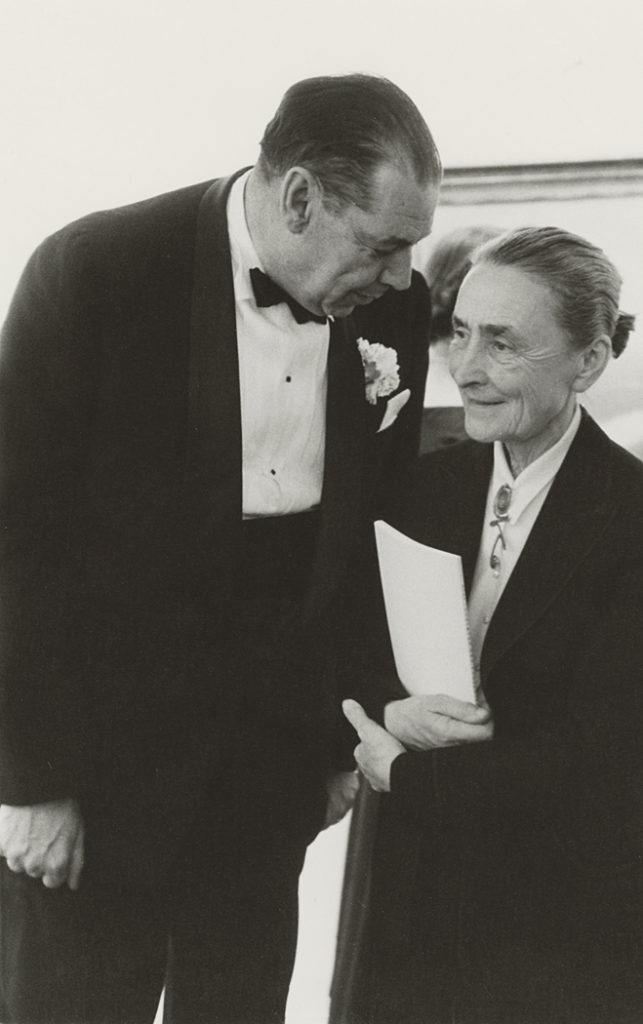
Rollie McKenna, Georgia O’Keeffe with René d’Harnoncourt, Director of MoMA, at the Georges Seurat Opening, NYC, 1958. Gelatin silver print. Center for Creative Photography, University of Arizona: Rosalie Thorne McKenna Archive. © Rosalie Thorne McKenna Foundation
Elliot Erwitt, Pennsylvania Dutch and Adidas, 1975. Rear view of an older couple in Pennsylvania Dutch garb and a younger one in totally contrasting, contemporary, casual gear at the beach. Their clothing would seem to define at least the most obvious part of their identities. Do they stand there by pure happenstance? Are they communicating with each other?
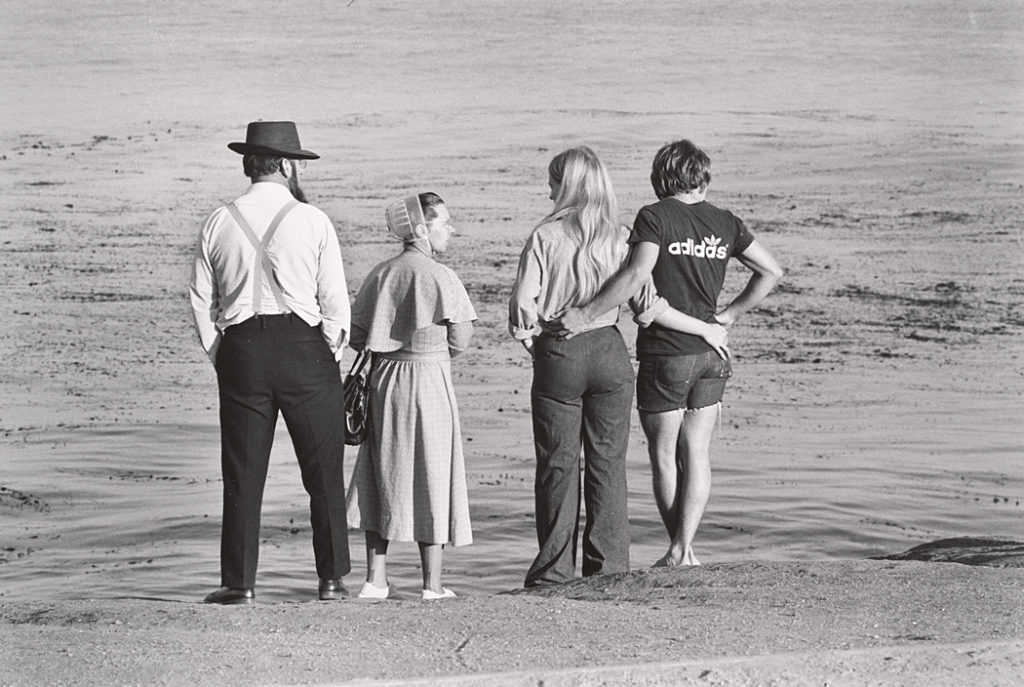
Elliott Erwitt, Pennsylvania Dutch & Adidas, Santa Cruz, U.S.A., 1975. Gelatin silver print. Center for Creative Photography, University of Arizona: Gift of Al Cohen. © Elliott Erwitt
Max Yavno, Muscle Beach, Los Angeles,1949 and Opening Night, San Francisco Opera, 1947. An obvious contrast, though the focus is on many, rather than individuals.

Max Yavno, Muscle Beach, Los Angeles, 1949. Gelatin silver print. Center for Creative Photography, University of Arizona: Purchase © Center for Creative Photography, The University of Arizona Foundation
Kozo Miyoshi, Tucson, Arizona, 1992. Similarly dressed and shod, except for their shirts, these four young cowboys still each project themselves as their own person.
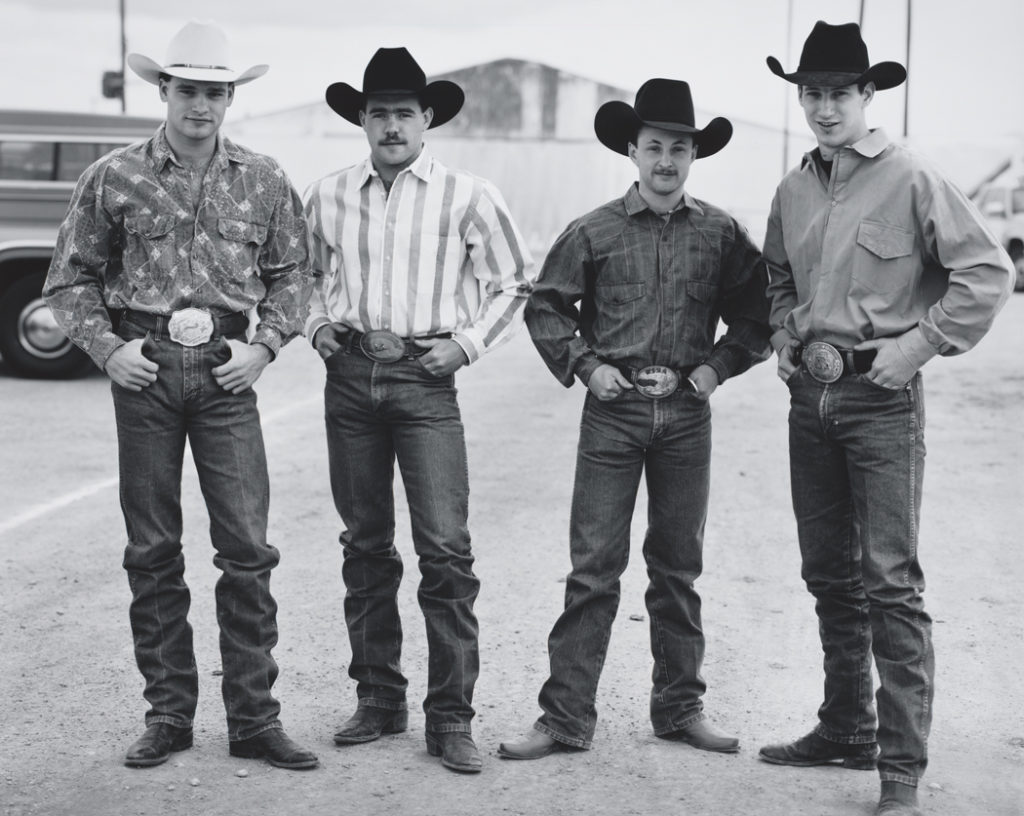
Kozo Miyoshi, Tucson, Arizona, 1992. Gelatin silver print. Center for Creative Photography, University of Arizona: Gift of the artist, DEP’T CO.,LTD., Tokyo, Nippon Polaroid, Tsudani Oil Co. Ltd.© Kozo Miyosh
The exhibition also includes two wall-projected videos. One with “fashionable” selfies of museum visitors, submitted via # PhxArtFashioningSelf. The second is a 2010 documentary by fashion and street photographer, Bill Cunningham. Shot in New York City, Bill Cunningham is seen in the documentary, shooting on the street. The focus is multiple fast flashes of color and pattern on the people who pass by him. The amusing, accompanying quote reads: “I’m not interested in celebrities with their free dresses. I’m interested in clothes.”
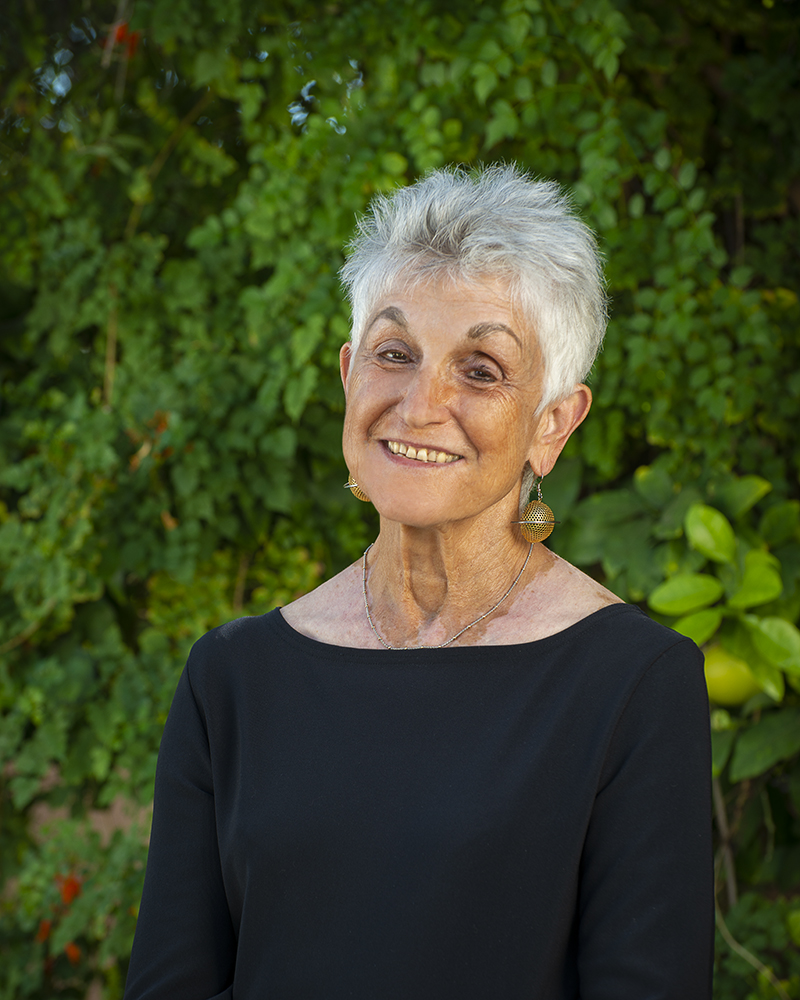
Karen Hodges
Contributing Writer
Karen Hodges worked in the Curatorial Department of Phoenix Art Museum (PAM) for over two decades. Although mostly involved with painting, sculpture and decorative arts, in all areas of the Collection, she fell in love with photography when the Museum’s cooperative agreement with the Center for Creative Photography (CCP) led to the establishment of the Norton Gallery. Work with Curator, Becky Senf, editing gallery and informational materials, deepened her interest in this art form. She served on the Board of INFOCUS from its founding as a PAM support group and continues to serve as “scribe” (secretary) to the Board of AZPA. Although self-described as a mediocre photographer, Karen has—within her means—collected photography and photo books for years and will continue to do so, even when she runs out of wall and shelf space!
Image Credit: Craig Smith
Contact Karen

